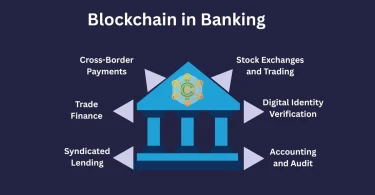Introduction:
Blockchain technology has been gaining popularity in the past few years, offering decentralized and transparent solutions in various industries. However, the blockchain world is slightly like a puzzle with pieces that don’t necessarily fit together because separate blockchain networks run independently. Blockchain interoperability acts as a bridge between these disparate networks, allowing them to communicate and share information. In this post, we’ll look at blockchain interoperability, why it’s necessary, how to accomplish it and what it might indicate for blockchain’s future.
Understanding Blockchain Interoperability:
Blockchain interoperability means that different blockchain networks can talk to each other and share information. It is just like ensuring that trains from various cities can operate on the same tracks and pick up passengers from one another. This makes blockchain systems more powerful and valuable since they can transfer data, assets, information and even smart contracts between blockchains.
Key Approaches to Blockchain Interoperability:
There are several methods for connecting blockchains related to each other.
One method is to employ special tools or protocols that serve as translators between multiple blockchains. These tools make it easy to move things like money and information from one blockchain to another.
Another approach is to develop basic norms that all blockchains agree to obey, similar to a common language. This simplifies their communication and cooperation with each other.
Importance of Blockchain Interoperability:
- Blockchain interoperability is significant because it allows blockchain networks to collaborate and do more.
- It enables them to exchange assets and information, similar to how different organizations share ideas and resources.
- This increases the use and accessibility of blockchain-based apps.
- It also stimulates innovation because developers can utilize different blockchains to develop novel features and new technologies.
Applications of Blockchain Interoperability:
There are numerous applications for blockchain interoperability.
- It facilitates the movement of digital assets and decentralized trading in finance.
- It aids in the tracking of products across many blockchains in supply chain management.
- It allows healthcare providers to share patient data safely and securely.
- It is also used in identity management systems, applications and governance.
Cracking the Code: Overcoming Challenges in Blockchain Interoperability.
Blockchain interoperability means that different blockchain networks can talk to each other and work together. This is a critical concern for the blockchain sector, as lack of interoperability limits or hinders blockchain technology’s potential.
- One major issue is that various blockchains have different technical features and setups. Blockchains use different consensus mechanisms, different programming languages; and different data structures. This makes it difficult to develop interoperability solutions that work seamlessly with all blockchains.
- Another issue is security. When two blockchains connect, security weaknesses may be exploited. For example, if one blockchain has been hacked, the attacker could get access to assets on the other blockchain.
- Finally, there are laws and regulations to consider. Governments are currently creating blockchain technology legislation; it is unclear how interoperability will be regulated. Because of this uncertainty, organizations are discreet about implementing interoperability solutions.
Advances in Blockchain Interoperability Solutions:
Even though there were tough problems, the world of blockchain connections has improved a lot.
Several projects are currently working on solutions that will allow multiple blockchains to communicate and interact with one another.
- The usage of cross-chain bridges is one feasible option. Cross-chain bridges are protocols that enable users to move assets between blockchains. There are various cross-chain bridge designs, but they all work by essentially locking up assets on one blockchain and issuing comparable assets on another.
- The application of layer-2 protocols is an additional approach to blockchain interoperability. Layer-2 protocols are built on top of current blockchains and can give a number of advantages such as scalability, privacy and interoperability.
Blockchain Interoperability: Practical Use Cases.
Here are some specific instances of how blockchain interoperability could be utilized to solve practical problems…
Cross-border payments: Payments can be delayed and expensive, particularly when sending money to developing countries. Connecting different blockchains can speed up, reduce costs, and make international payments easier for everyone.
Supply chain management: Blockchain interoperability could be used to establish more transparent and efficient supply networks. This would help to decrease fraud and counterfeiting while also ensuring that products are created and moved in a sustainable and ethical manner.
Decentralized finance (DeFi): Although DeFi applications are still in their childhood, they have the potential to revolutionize the financial industry. Blockchain interoperability could assist DeFi applications in reaching a larger audience and providing a more comprehensive range of financial products and services.
Collaboration and Industry Advances:
Making blockchains cooperate requires collaboration. People and organizations are collaborating to develop tools and guidelines for interoperability. They’re also forging alliances to make these concepts a reality.
Conclusion:
In simple words, blockchain interoperability acts like a bridge, linking different blockchain networks together. This connection can change many industries, like finance, supply chain and healthcare. Even though it’s hard, progress in making these connections is creating a future where blockchains can work together and




Leave a Comment